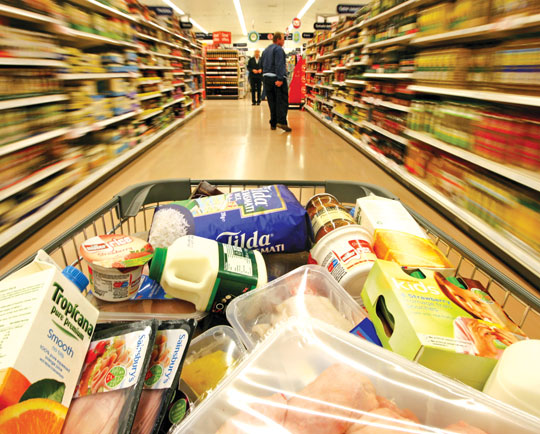The sixth-wettest spring on record and falling inflation led to the slowest increase in take-home grocery sales (1%) since June 2022.
The poor weather halted footfall, with the average shopper visiting a supermarket 16.3 times in the four weeks to 9 June, down from 16.4 in June last year.
It also meant typical purchases around this time were out of kilter, with 25% fewer sun care items bought this month compared with last year, while prepared salads slid 11%. On the flip side, sales of soup soared almost 24%, according to analytics firm Kantar.
While this all contributed to slower market growth, the drop in grocery price inflation is leading to improved consumer sentiment.
Nearly four in 10 households described their financial position as “comfortable” in May 2024, a proportion not surpassed since November 2021.

Wellness and wellbeing holidays: Travel insurance is essential for your peace of mind
Out of the pandemic lockdowns, there’s a greater emphasis on wellbeing and wellness, with
Sponsored by Post Office
Fraser McKevitt, head of retail and consumer insight at Kantar, said: “The cost-of-living crisis isn’t over – far from it. 22% of households say they’re struggling, meaning they aren’t able to cover their expenses or are just making ends meet.
“However, there are positive signs that many of us no longer feel the need to restrict our spending quite so much, with lower inflation helping to ease the pressure on people’s pockets. In May, we recorded the largest jump in the number of comfortable households since January 2023, rising by two percentage points on February 2024’s figure.
“Costs are falling in nearly one-third of the grocery categories we track, including toilet tissues, butter and milk. That’s a big increase from last year, when just 1% of markets were declining.”
Football to increase footfall?
With the men’s UEFA European Football Championship underway, the supermarkets will be “waiting to see if positive performances by England and Scotland can deliver a win at the tills too”, McKevitt added.
He said: “The grocers are looking to entice consumers enjoying this year’s tournament, with the proportion of beer and lager sales on promotion leaping up to over 40% in the latest four weeks. Retailers will be competing with fans heading out of the house to watch the football as well as with each other. Pubs especially could benefit from a boost – whether or not football comes home. Throughout the last tournament held in 2021, sales of food and non-alcoholic drinks in pubs soared by 60% compared with the average month that year.”
Supermarket sales
Ocado was the fastest growing grocer for the fourth month in a row, increasing sales by 10.7% over the 12 weeks to 9 June. This is ahead of the total online market, which saw sales rise by 4%, Kantar revealed. Nearly a quarter (23%) of British households did their grocery shopping online in the last three months, with over 4% choosing to use Ocado.
German budget retailer Lidl increased its stake in the market by 0.4 percentage points to 8.1%, matching its sales growth for the latest 12 weeks. Meanwhile Aldi – the fourth-largest retailer by consumer spend – boosted sales by 0.8%, taking its share to 10%.
Tesco achieved its highest market share since February 2022, growing 0.6 percentage points to 27.7% as sales were boosted by 4.6%. Sainsbury’s saw its sales rise by 4.9%, helping to increase its market share from 14.9% to 15.2%.
Morrisons recorded a 1.1% sales rise with its share of the market at 8.7%. Frozen food specialist Iceland boosted sales by 4.4% and holds 2.4% of the market, up from 2.3% a year ago. Kantar revealed this is the first annual market share increase since March last year.
Elsewhere, 188,000 new shoppers flocked to Waitrose – a bigger increase than any other grocer. Here, sales grew 3.5%, taking its share to 4.5%, while Asda and convenience retailer Co-op captured 12.8% and 5.5% of the grocery market respectively.




